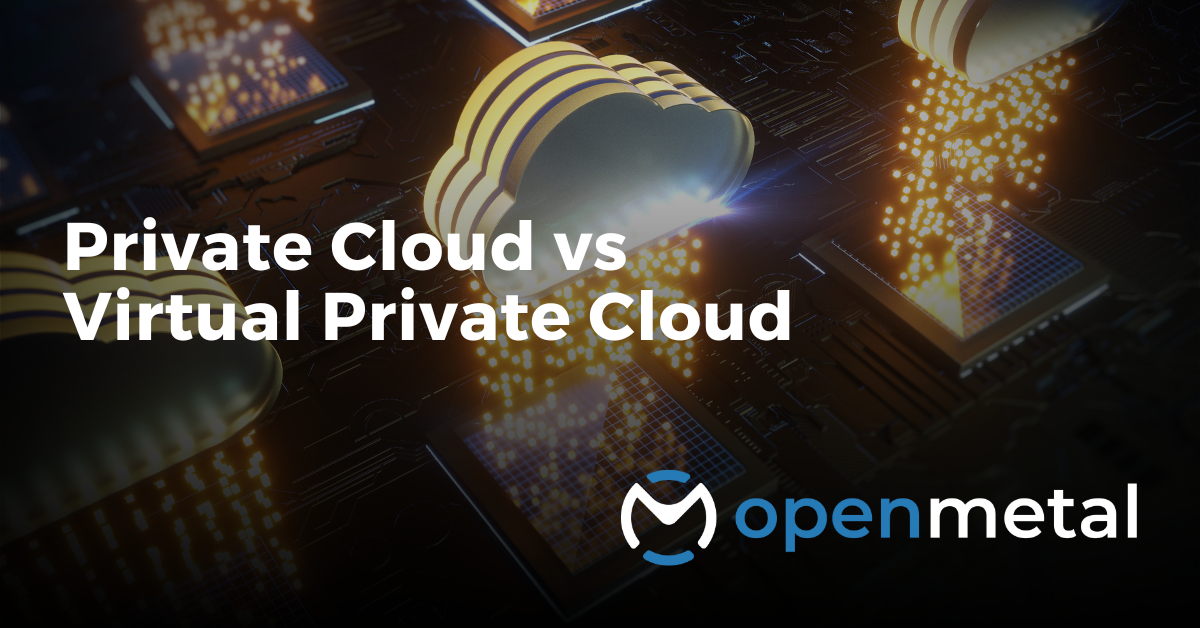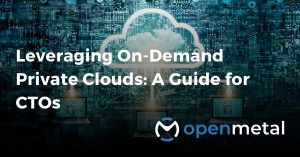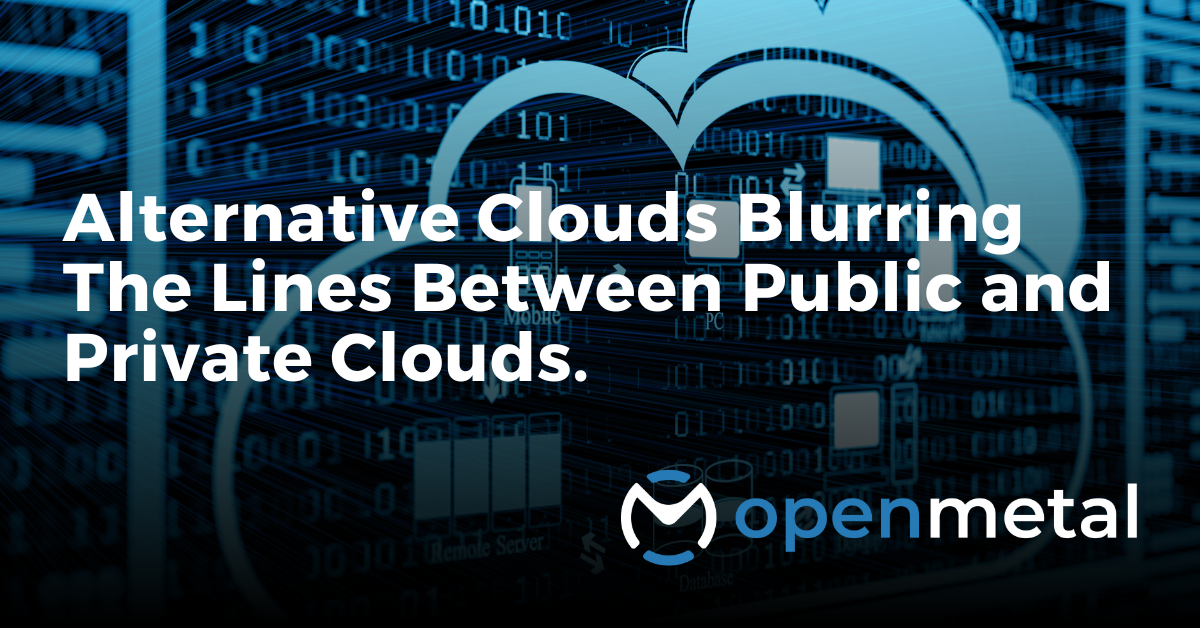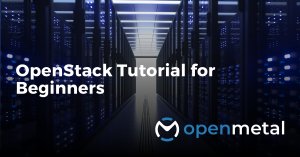
In short, a VPC or Virtual Private Cloud is not remotely equal to a private cloud. In fact, a true private cloud slices up its resources into hundreds or even thousands of Virtual Private Clouds.
I would say an apple versus an orange comparison or maybe more like an apple versus tiny little slices of apple? Anyways!
Let’s dig into this though. Many companies are now exploring alternatives to traditional high cost public clouds providing VPCs. Understanding the difference between a Virtual Private Cloud (VPC) and a true private cloud is fundamental.
A note of caution. As public cloud became popular in the last 10 years the definition of a private cloud versus a virtual private cloud become muddled. In fact, even a simple search on Google for “private cloud” gets it wrong by returning “virtual private cloud” definitions.
Why the Confusion Between VPC and Private Cloud
The confusion primarily comes from large public clouds using the terms in a way that invites comparison between a Virtual Private Cloud and a private cloud plus it is a logical term to use when describing the resulting private networking and bucketing of all resources into that space. Logical, but confusing unless private cloud has been defined clearly already as the superset of Virtual Private Clouds.
When you are researching private clouds you may notice they can be referred to as “dedicated private cloud” or “true private cloud” or “hosted private cloud” or, further, by their software names such as OpenStack, CloudStack, and ProxMox. You may also run into closed source systems like VMWare or Nutanix.
In addition, part of the confusion between private cloud and Virtual Private Cloud comes from the uses “true private cloud” can accomplish. For example, the most popular open source cloud system is OpenStack. OpenStack is commonly used by public cloud providers as their infrastructure management system. OpenStack will turn the hardware it is managing into Compute, Block Storage, Object Storage Networking, Load Balancing, etc. and expose these resource via API or though a GUI for self service consumption within a Virtual Private Cloud (or Project in OpenStack vernacular). So is your cloud then a private cloud or a public cloud? That is up for your own debate, but one thing it is definitely not is a “Virtual Private Cloud” as it provides VPCs.
In this case, it might be better to call it an OpenStack. An OpenStack is an infrastructure management system that provides self service access to infrastructure consumers within your company, for your products, or for sale to the open market. If you offer the infrastructure to your internal company consumers it is your private cloud. If you are using it as the underlying infrastructure for your SaaS, you are “cloud native” on your own infrastructure. If you sell it on the open market, you are a public cloud provider.
Define a Virtual Private Cloud or VPC
So then let’s define a Virtual Private Cloud. A Virtual Private Cloud, or VPC for short, is a much more literal thing. It is simply a portion of the underlying server hardware segregated by the infrastructure management software and placed upon a private network for you, the user of the VPC, to control. Fundamental to a Virtual Private Cloud is the private network which keeps traffic between members of the private network separated from other private networks.
As far as I know, all public cloud providers that are offering Virtual Private Clouds use open source network software (OpenvSwitch is common, for example) to create private networks within host servers and leverage the VxLAN tagged traffic approach. For clarity, let’s step back slightly.
Within typical physical switches, multiple private networks are supported using VLANs. Traffic traversing a physical wire and physical Port do not mix between VLANs because the sending source NIC and receiving software on the connected Port both have been configured to use a specific tag for the specific VLAN assigned. For example, VLAN 10 traffic simply means that traffic has had a tag added to it on every frame to dictate it belongs to VLAN 10. The receiving Port is configured to only pass traffic with the VLAN 10 tag. All other traffic going in or out will be dropped.
VxLAN takes that one step further and creates its own set of tags inside of VLAN 10. This allows VxLAN traffic to traverse VLANs safely. The provider of the infrastructure, in our case this is us with an OpenStack Powered Private Cloud, knows the intention is to handle VxLAN traffic inside the VLANs and has thus set the MTU of the physical switches to include additional packet space for the tags above the expected MTU of 1500 or 9000 (jumbo frames).
A private cloud provides the integrated software needed to create these private networks within a specially configured physical network. In a public cloud, a VPC is just one of thousands of VPCs using the created space supplied by the private cloud.
Just to reiterate for clarity – is Virtual Private Cloud a private cloud? No. A virtual private cloud is not remotely equal to a private cloud.
OpenMetal True Private Cloud

With OpenMetal, when you get a hosted Private Cloud from us, you will get a true dedicated OpenStack powered private cloud. You can deliver infrastructure via Virtual Private Clouds:
- To your company by department or project or other internal construct that works for you.
- For your SaaS system by redundancy like Load Balancer to Application and Database pairs or by Kubernetes Pods or by other logical application architecture slices.
- For your customers with simple or rich infrastructure demands that may span VPCs, regions, bare metal, or storage clusters.
- To provide public cloud services by API, by the built in GUI Horizon, or by one of our OpenMetal Community Billing and Control Panel systems, Fleio, Osie, and ComputingStack’s UniView.
More on the OpenMetal Blog…

Leveraging On-Demand Private Clouds: A Guide for CTOs
Explore this comprehensive guide on how Chief Technology Officers (CTOs) and technical executives can harness the power of on-demand private clouds for their organizations. In this blog post, we’ll explore the insights about the benefits and strategies of leveraging on-d…Read More

Alternative Clouds Blurring The Lines Between Public and Private Clouds
This blog discusses the rising costs and lack of control in public cloud services and explores the alternative solution of OpenMetal’s On-Demand OpenStack cloud cores. It highlights the significant cost savings of up to 80% compared to public …Read More

OpenStack Tutorial For Beginners.
This blog introduces OpenStack, an open-source cloud computing infrastructure software known for its scalability, reliability, and control over infrastructure. It addresses the common hesitations around OpenStack’s complexity and provides an overview of a tutorial created by FreeCodeCamp, … Read More
Test Drive
For eligible organizations, individuals, and Open Source Partners, Private Cloud Cores are free to trial. Apply today to qualify.
Subscribe
Join our community! Subscribe to our newsletter to get the latest company news, product releases, updates from partners, and more.


































